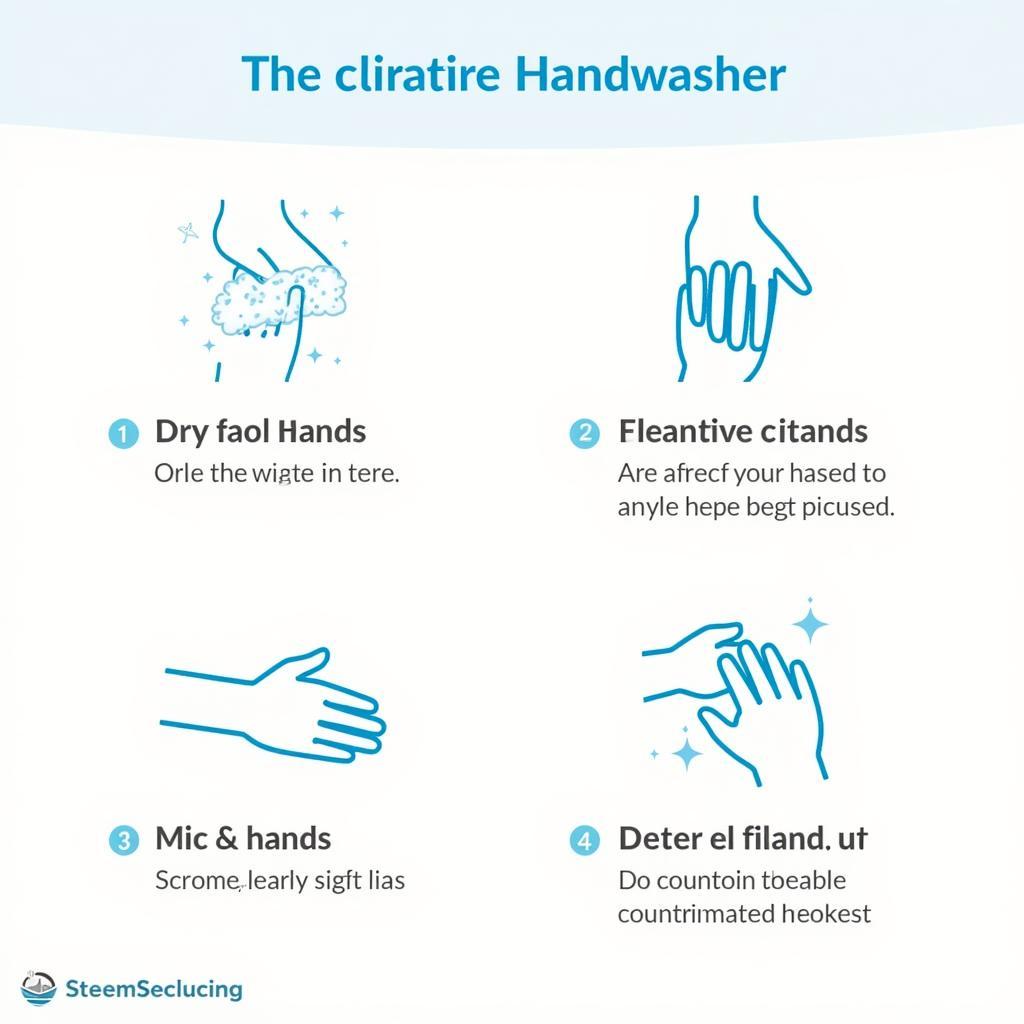Food safety is paramount for everyone, from seasoned chefs to home cooks. This Food Safety Cheat Sheet provides essential information to keep your kitchen safe and your food delicious. We’ll cover everything from proper handwashing to safe storage temperatures, empowering you to confidently handle food and minimize the risk of foodborne illnesses.
Handwashing: The First Line of Defense
Proper handwashing is the cornerstone of food safety. Before and after handling food, especially raw meat, poultry, and seafood, wash your hands thoroughly with soap and warm water for at least 20 seconds. This simple act can significantly reduce the spread of harmful bacteria.
- Wet your hands with clean, running water (warm or cold) and apply soap.
- Lather your hands by rubbing them together with the soap. Be sure to lather the backs of your hands, between your fingers, and under your nails.
- Scrub your hands for at least 20 seconds. Need a timer? Hum the “Happy Birthday” song from beginning to end twice.
- Rinse your hands well under clean, running water.
- Dry your hands using a clean towel or air dry them.
 Proper Handwashing Technique
Proper Handwashing Technique
Safe Food Storage: Keeping it Fresh and Safe
Storing food at the correct temperatures prevents the growth of harmful bacteria. Refrigerate perishable foods within two hours of purchasing or cooking. Maintain a refrigerator temperature of 40°F (4°C) or below and a freezer temperature of 0°F (-18°C) or below.
Refrigerator Storage Guidelines
- Store raw meat, poultry, and seafood on the bottom shelf to prevent cross-contamination.
- Use airtight containers to store leftovers and label them with the date.
- Don’t overpack your refrigerator, as this can hinder proper air circulation and temperature regulation.
Freezer Storage Tips
- Freeze food in airtight containers or freezer bags to prevent freezer burn.
- Label frozen food with the date for easy identification and to ensure you use it within a reasonable timeframe.
- Thaw frozen food safely in the refrigerator, in cold water, or in the microwave. Never thaw food at room temperature.
Cooking Temperatures: Ensuring Food is Safe to Eat
Cooking food to the proper internal temperature kills harmful bacteria. Use a food thermometer to accurately measure the internal temperature of meat, poultry, and seafood.
- Poultry: 165°F (74°C)
- Ground Meat: 160°F (71°C)
- Beef, Pork, Lamb, Veal (steaks, chops, roasts): 145°F (63°C)
- Fish: 145°F (63°C)
“Using a food thermometer takes the guesswork out of cooking and ensures your food is safe to eat,” says renowned food safety expert, Dr. Amelia Carter, Ph.D. in Food Science from Cornell University.
Preventing Cross-Contamination: Keeping it Clean
Cross-contamination occurs when bacteria from one food item are transferred to another. To prevent this, use separate cutting boards, utensils, and plates for raw and cooked foods. Wash cutting boards and utensils thoroughly with hot, soapy water after each use.
“Think of it like this: Raw meat can harbor bacteria that you don’t want on your ready-to-eat foods. Keeping things separate is key to preventing cross-contamination,” advises Chef Michael Rossi, a certified culinary instructor with over 20 years of experience.
Your Food Safety Cheat Sheet Summary
This food safety cheat sheet has provided you with essential tips to keep your food safe. Remember to wash your hands, store food properly, cook to the correct temperatures, and prevent cross-contamination. By following these guidelines, you can minimize the risk of foodborne illnesses and enjoy delicious and safe meals.
FAQ
- How long can I keep leftovers in the refrigerator? Leftovers should be refrigerated within two hours and consumed within 3-4 days.
- What’s the best way to thaw frozen meat? Thaw frozen meat in the refrigerator, in cold water, or in the microwave.
- How often should I clean my cutting boards? After each use.
- What is the danger zone for food temperatures? The danger zone is between 40°F (4°C) and 140°F (60°C).
- How can I prevent cross-contamination? Use separate cutting boards and utensils for raw and cooked foods.
- What’s the proper way to wash fruits and vegetables? Wash fruits and vegetables under running water before eating or preparing them.
- How can I tell if food has spoiled? Spoiled food often has an off odor, unusual color, or slimy texture.
For more information on specific food safety topics, check out our other helpful articles on [link to relevant article on your website]. For any questions or concerns, please contact us at Phone Number: 02437655121, Email: minacones@gmail.com Or visit our address: 3PGH+8R9, ĐT70A, thôn Trung, Bắc Từ Liêm, Hà Nội, Việt Nam. We have a 24/7 customer support team.